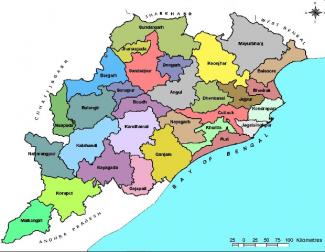A New Dimension of Water Conflict in Orissa: Industry vs Agriculture
While water war syndrome is being contested in the international security discourse, the real water conflict remains an active flashpoint within the national boundary. On November 6, 2007, some 30,000 farmers stormed Hirakud reservoir on the Mahanadi River in Sambalpur, Orissa. The reason is that water from reservoirs originally meant for irrigation is increasingly being given to industries. The mass agitation was faced with police high-handedness, injuring many. The November agitation has state-wise political ramifications. The chief minister made a categorical statement on not giving ‘a single drop’ of water from the reservoir to industries. The Opposition Congress declared it would reconsider water allocations to industries if elected back to power. One way the mere size of the protest put a question mark over the state’s industrial overdrive.
Protesting farmers, dependent on the reservoir for irrigation, says that water allocation has decreased due to increased allocation to industries. On the other hand, the government says there is surplus water in the reservoir. With this presumption, the government has allocated industries water from the Hirakud reservoir. It raises a fundamental question: Does the state have enough water for industries besides irrigation? The question is crucial as two-thirds of Orissa’s population depend on agriculture. On the other hand, the government has signed MoUs worth Rs. 3,00,000 crores with massive water-guzzling industries.
The use of water for industries in Orissa is indeed phenomenal. This raises questions over whether the state will be able to meet future industrial demand for water. During 2002-2003, Orissa allocated 10 billion litres of water to produce 52.21 million tonnes of coal. This is 50 times the total urban water supply in the state. If it is not alarming, the state’s proposed steel production, for instance, will require 1.2 billion litres of water every year. This is more than five times the total urban water supply, mostly sourced from the state’s 11 rivers. An official note on industries’ water needs shows that new industrial units will require 6.22 billion litres of water per day in the next five years. This much water can support 60 cities the size of Dhanbad, which hosts double the population of Sambalpur. Of this, 3.52 billion litres a day is allocated or recommended, and proposals for 2.34 billion litres are under consideration.
The fact remains that not much water flows in the rivers. In its own estimate, the State government says that by 2051, the Brahmani river system will have to import 2,288.47 billion litres from the Mahanadi to meet growing demands. Astonishingly, the industrial demand for Mahanadi’s water will double by then!
Meanwhile, it seems the government has conveniently forgotten about the state's huge water needs for agriculture. The government doesn’t have specific knowledge about agricultural water needs. The state had 6.59 million ha of cultivable land in 2005, of which 5.9 million ha had irrigation potential. Only 2.65 million ha could be irrigated. Orissa is the only major state in the country that has registered an increase in the percentage of the population dependent on agriculture despite agricultural production being down. Nearly 85 percent of its population lives in rural areas, and most of them are dependent on agriculture and other activities. This means that irrigation has to be stepped up to sustain the growing demand for agriculture.
On the other hand, the government pushes industrialization to secure employment for its 2 million unemployed and another 2 million underemployed youth. The proposed investment in Orissa can create only 175,000 jobs. This is negligible in the face of the huge demand for employment that has to come from agriculture.
The government encourages and facilitates industries that will not be effective employers. People who are dependent on agriculture see this as a direct threat to their source of livelihood, which has triggered a conflict of interests. The Hirakud flare-up is just a reminder of the million revolts in taking on water in India. The immediate response is to strike a crucial balance among various water users.
